first level title
Original translation: Block unicorn
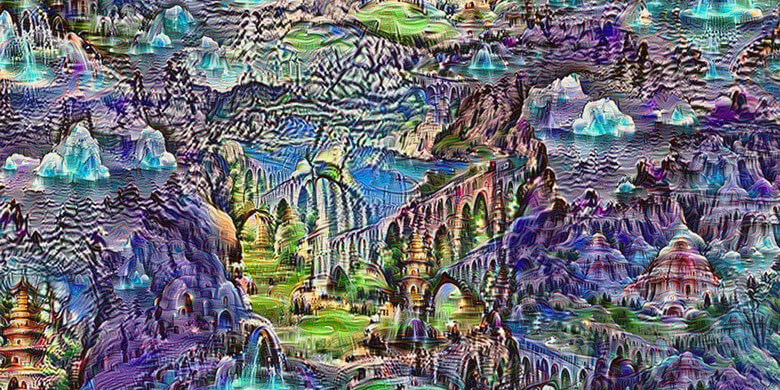
DAO
From the law of the jungle to the law of man, humans are social animals who depend on and need cooperation to survive and thrive. Therefore, we have always organized ourselves into tribes, groups, teams, committees, corporations, and other forms of collective action to develop, learn, adapt, coordinate, and execute on our higher vision, and in all such organizations, the unified vision And goals are prescient about transcending personal achievement.
In traditional companies and business organizations, all employees have employment contracts and internal policies that govern their relationship with the company and with each other. Furthermore, their rights and obligations are governed by legal agreements that are broadly enforced by the governing laws of the country in which they live as a social contract, i.e. the law is the code.
On the other hand, DAO exists in the virtual layer above IRL, which is an Internet-native organization; it is collectively managed and owned by its members according to preset rules, and automatically executes the "smart" contracts and guidelines specified in the code to be executed on the blockchain. That is code is law. One of the main benefits of DAOs is that they are operationally more functionally transparent than traditional organizations, since most operations take place "on-chain" and anyone can verify the authenticity of such "on-chain" transactions made by a DAO. nature, although some operations may remain "off-chain".
The term DAO stands for three elements, although many more could describe its true nature:
a) Decentralization: DAOs are considered decentralized because they are deployed on public blockchains, making them open, permissionless, borderless and censorship resistant.
b.) Self-government: DAOs are considered autonomous because the DAO's primary infrastructure is open-source software, and its operations will effectively follow the rules embedded in its code and the governance efforts implemented by its community.
first level title
How do DAOs work?
governance
governance
Governance is often required to build legitimacy into the decisions a DAO makes. These decisions should be made keeping in mind the DAO's mission, vision and goals. Governance is complex and hard to get right (as the history of traditional corporate governance illustrates). Although it is impossible to build a "perfect" system to operate a DAO, it is certainly possible to construct a governance model and a "playbook" for the DAO structure according to the nature of its operations. To date, the DAO-based community has experimented with various systems to manage infrastructure, ranging from informal to formal processes, from loosely coupled off-chain systems to tightly coupled on-chain systems. The ideal governance model is one that maximizes the DAO's meaningful participation, fair use by the community, and fulfillment of its mission.
Over the past few years, we have seen major innovations from leading DAOs in token-based governance models, where tokens function similarly to stocks (baskets of rights), but run on open software systems, thereby providing Its holders promote long-term value and growth. It empowers token holders to change the rules of the system when necessary and allocate ecosystem resources through the decision-making process. This is valuable to users, as they become "owners" of the protocol. This creates stronger network effects because the more useful the protocol is, the more valuable it is to govern it.
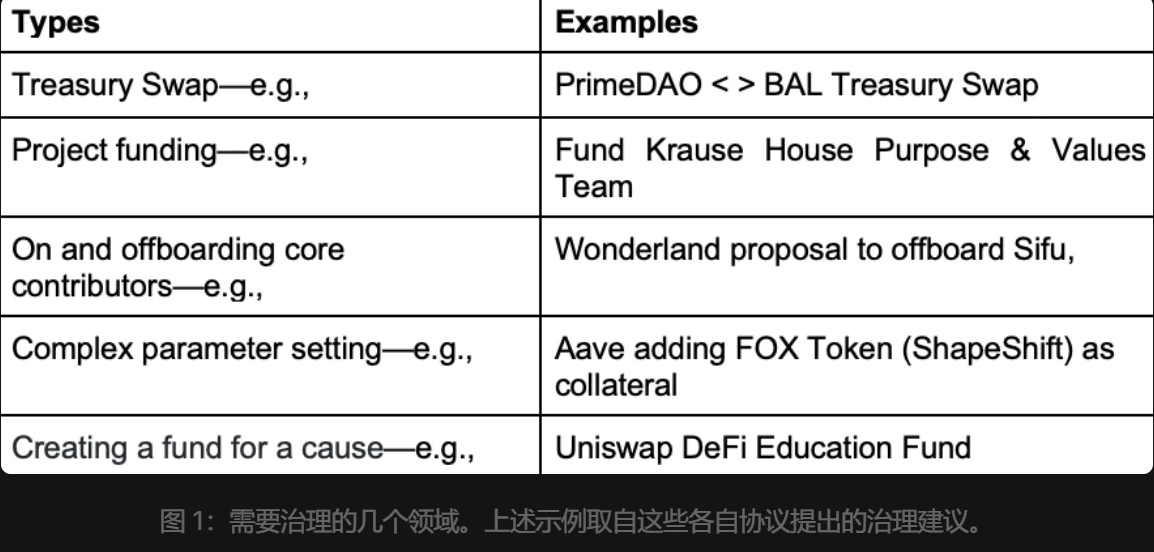
entity structure
DAOs can share characteristics with partners, corporations, trusts, and cooperatives, but operational and organizational functions derived from the technology itself are problematic when subsumed within existing entity structures (Wyoming DAO-LLC statute). In our view, a DAO is the metasoftware that underpins any underlying legal structure, and a major decision in the early stages of building a DAO is whether it has a for-profit or non-profit purpose.
Non-profit DAOs aggregate funds and fund projects based on members' votes, serve the entire community, and pursue education, science, the environment, charity, and more. Here are some interesting examples: DiatomDAO is ramping up support for protecting the oceans; KlimaDAO wants to accelerate solutions to climate change by increasing the price of carbon assets. LexDAO is a non-profit decentralized association of web3 lawyers with an educational platform.
Other types of DAOs are organized for profit. Here are some interesting examples of for-profit DAOs: MetaCartel Ventures (Venture DAO) is a for-profit DAO created by the MetaCartel community to invest in early-stage decentralized applications (DApps); A platform that manages financial assets in a standardized manner.
Earlier, if DAOs were organized for profit, they encountered securities law issues, limiting their application and ability to fund ecosystem development and deploy capital efficiently. Even when DAOs are organized for charitable or social purposes, they enter a legal gray area where members may be considered partners and thus each member is personally responsible for the organization's activities. Despite these technical and legal challenges, the DAO's luster has not diminished. Various forms of legal structures can now be used by DAOs to initiate and enable limited liability structures.
legal structure
There are four main camps of thought on how to deal with the legal structure of for-profit DAOs. The first is the US-based LLC camp, which mainly includes three options:
1. The first option is to register your DAO under DAO-specific Wyoming legislation. The legislation allows DAOs to legally form a limited liability company that can hire staff, scale and grow. The legislation aims to give DAOs the legitimacy they need to better establish themselves and grow in the global marketplace.
2. The second option is to create a "legal wrapper" under Delaware's freedom of contract statute, created by structuring the DAO as a limited liability company, to hold the company accountable for contracts, taxes, and violations, Instead of an individual being in charge of a DAO it is also possible to use Ricardian LLC as an NFT-Factory smart contract with embedded Delaware Series LLC protocol functionality and IPFS hosted documentation as a public product on Ethereum.
3. A final option and a recently explored model is to register your DAO under other legislation, including the Colorado cooperative statute, specifically the Uniform Limited Cooperative Association Act (CULCAA) using the Limited Cooperative Association (LCA) structure. An LCA is a hybrid between a limited liability company (LLC) and a corporation. It is an entity established on the basis of unincorporated substantive law. The LCA model has the potential to keep DAOs true to their ideals on a secure legal basis.
The second is the UNA camp, which stands for "Unincorporated Non-Profit Associate". It is created when a group of people want to form an association without formalizing it through registration. The UNA structure is used in the construction of the digital museum MUSE0, where collectors and artists donate NFTs, and the community decides whether it should enter LexDAO's permanent collection and associations.
The third is an investment club camp, which can be created as a Limited Liability Autonomous Organization (LAO), which is a legal entity such as an LLC or C-Corp. LAO can sign legally binding contracts, hold off-chain assets, and pay dividends. Investors in LAO must be accredited, but service providers who are compensated in LAO shares can earn their stake in the LAO portfolio.
The last is the camp of offshore entities that register their DAOs in foreign jurisdictions with favorable tax regimes (e.g., Cayman Islands, Panama, Singapore, Ireland, British Virgin Islands, Bermuda, and Switzerland) and wrap their DAOs in Simplified limited liability protection formed in that jurisdiction is provided within a foundation-like entity or entity. There is no perfect legal structure for DAOs. Each option has to be made considering multiple factors, taking into account its drawbacks, and each option is mired in regulatory complexity. Ultimately, a decision needs to be made (preferably in conjunction with legal counsel) taking into account the risks of limited liability and tax structures. The marketplace now offers multiple protocols that support the deployment of DAOs with preset governance frameworks (and some with underlying legal entities).
DAO deployment framework
The DAO Deployment Framework is a set of smart contracts developed by the platform that allow for simplified deployment of DAOs using preset governance models. These platforms serve as a base layer to support the creation and governance of DAOs, including their protocols, funding, ownership, membership management, proposals, and other activities that require coordination. Different DAO framework platforms endow DAO with different capability sets. Deploying a DAO without a platform is possible, but it may require specific technical and legal skills that most communities do not readily possess. Examples of platforms that provide such frameworks are:
Moloch v2 is an upgraded version of MolochDAO that allows DAOs to acquire and spend multiple different tokens, "guild excommunication" to remove unwanted members, "anger exit" for members who wish to exit the DAO with some proceeds, and "loot ” to issue non-voting shares but are entitled to financial distributions.
KaliDAO is a protocol for on-chain organizations inspired by the best components of Compound and Moloch DAO governance. The smart contract code is simple, easy to read, secures assets, and can be customized through its extensions. The KaliDAO protocol supports the establishment of LLC and UNA legal structures with DAOs, and in a no-code format, founders can easily launch DAOs with limited liability protection.
DAOhaus is a no-code platform for getting DAOs up and running. It is owned and operated by its investors and community. All DAOs on the platform use Moloch's glorious open source code.
OpenLaw's Tribute makes DAO development easier by balancing a more modular design and optimistic rollup with Moloch's safety guarantees. Its tech stack includes solutions for canceling proposals, creating non-voting shares, kicking out members, using NFTs to gain membership, whitelisting tokens, and more.
DAO Stack is a modular stack that includes a governance protocol and an easy-to-use interface for creating and managing DAOs.
Colony v2 focuses on reputation-based task management, ownership, structure, authority, financial management, and dispute resolution.
Aragon provides a suite of applications to create, manage and govern DAOs at scale. This includes Aragon Court, Aragon Govern, Aragon Voice, and Aragon Client.
Orca is designed around "pods", which is another name for working groups. Pods are in a sense treated as child DAOs, with their own membership and governance. Essentially, each pod acts as a mini-DAO within a larger DAO structure.
Properties of DAOs
Every DAO is different in terms of decentralization and autonomy, but fundamentally, these are the core values that make an organization a DAO. In addition to these core values, building a purpose-driven DAO requires several prerequisites:
contribute
Compared to traditional corporations, individuals can move fluidly between DAOs, often contributing to multiple DAOs at the same time in a permissionless manner, i.e. DAOs are open source communities. This flexibility has attracted many contributors and is one of the factors that enables DAOs to attract new talent like traditional open source. Some contributors thrive when they can flow between projects and contribute where they feel most inspired; others may thrive when others can delve into a project without distraction. Still, others want something in between. Where DAOs really shine compared to traditional organizations is that they can support many contributor engagement models simultaneously, allowing contributors to choose the model that works for them.
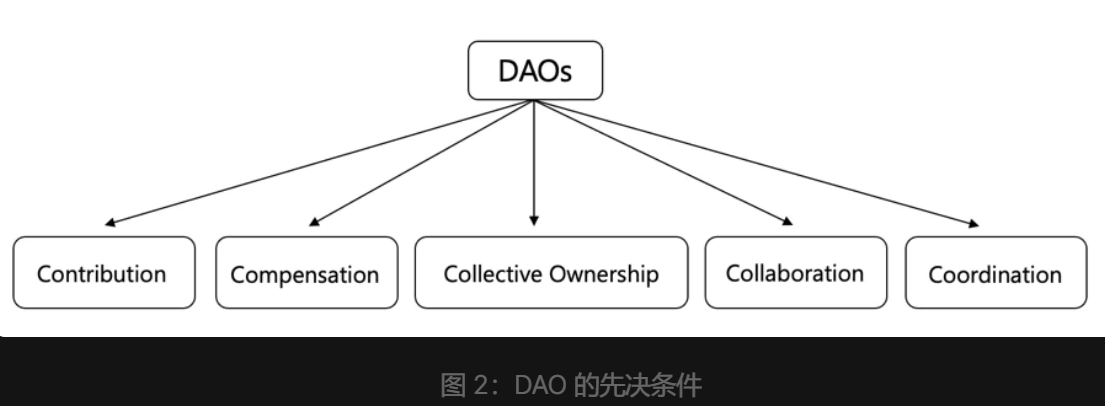
compensation
DAOs currently benefit from the flexibility they can offer their contributors. This flexibility appeals to many contributors, but it often leaves contributors navigating multiple compensation structures. DAOs must ensure that compensation is commensurate with the value created, and their non-hierarchical nature presents challenges in measuring that value, especially as contributors learn and grow. However, designing a compensation plan that facilitates contributor selection while remaining fair, transparent, and manageable is critical for DAOs. According to DAOhaus, there is a set of principles for creating an adaptable contributor compensation plan:
1. Contributors should be flexible to participate in the DAO according to their level of participation.
2. The contributor participation and compensation model should be interoperable with other DAOs.
3. Contributor value should be assessed both bottom-up and top-down.
4. Contribution to DAO should be a transparent activity, preferably an on-chain mechanism.
5. Ideally, contributions to a DAO should be documented in its terms of operation.
Some examples of compensation and contribution tools suitable for DAOs in web3 are:
Coordinape is a compensation tool based on reciprocity, based on the premise that the contributors to the workgroup know best who creates the most value.
SourceCred uses an algorithm to determine how much value a contribution or contributor adds to the project as a whole.
Govrn created a "Movement Model" where the community assigns weights to different types of contributions according to their priorities.
Opolis is one of the first digital employment cooperatives for independent workers, offering HR benefits in web3.
Sablier is a real-time financial protocol that leverages smart contracts to provide continuous, autonomous, trustless payments.
Superfluid is a protocol for handling subscriptions, wages, rewards, and any composable value stream, with continuous settlement and netting per second for extreme capital efficiency.
Roll offers a hosted Ethereum wallet capable of sending and receiving social funds from the Ethereum blockchain and the Roll network.
collective ownership
The idea of collective ownership is at the heart of DAOs. A DAO is not meant to be owned by a handful of founders and investors, but by the community that forms its very essence. This concept of collective ownership works because everyone is a stakeholder (via the token) and no one person is the custodian of the funds and decision makers (except for the treasury multisig itself). Ownership determines incentives and motivates users to contribute to the product in a deeper way, whether it be ideas, development, design, law, or community building. Over the past decade, we have lived in a period where ownership is concentrated in a few centralized organizations that dictate end-user relationships. DAOs represent a new framework for organizational culture, where ownership is taken back and redistributed to the community that built it. Examples such as PleasrDAO's breakdown of the Doge meme, ConstitutionDAO's raising over $40 million to buy a copy of the US Constitution, or AssangeDAO's fundraising to free Julian Assange provide templates for new ownership models. More examples of how next-gen platforms are driving ownership economies:
Gitcoin is a platform that enables developers to get paid for working on open source projects.
Seed Club is a social token incubator focused on helping creators launch and grow social tokens.
Friends with Benefits is a social DAO and community 100% owned and managed by participants.
SuperRare, an NFT marketplace that distributes tokens to its artists and collectors, who will manage the curation, DAO treasury, and future product direction.
ObscuraDAO offers photographers commissions to produce the projects they envision, communities, funding opportunities, and educational resources to help them explore NFT photography.
cooperate
cooperate
We need a fully interactive and collaborative DAO ecosystem for DAOs to truly revolutionize the way we work and coordinate. Many DAOs share common goals, but they currently operate in silos and lack tools for collaboration. Building and improving tools and platforms for the DAO community to work together will have a huge impact and generate powerful interactions among DAOs. Many DAOs are emerging that provide DAOs with the tools to communicate and coordinate like Prime DAO. But we are still in the early stages of this revolution. There are many good examples that demonstrate D2D collaboration:
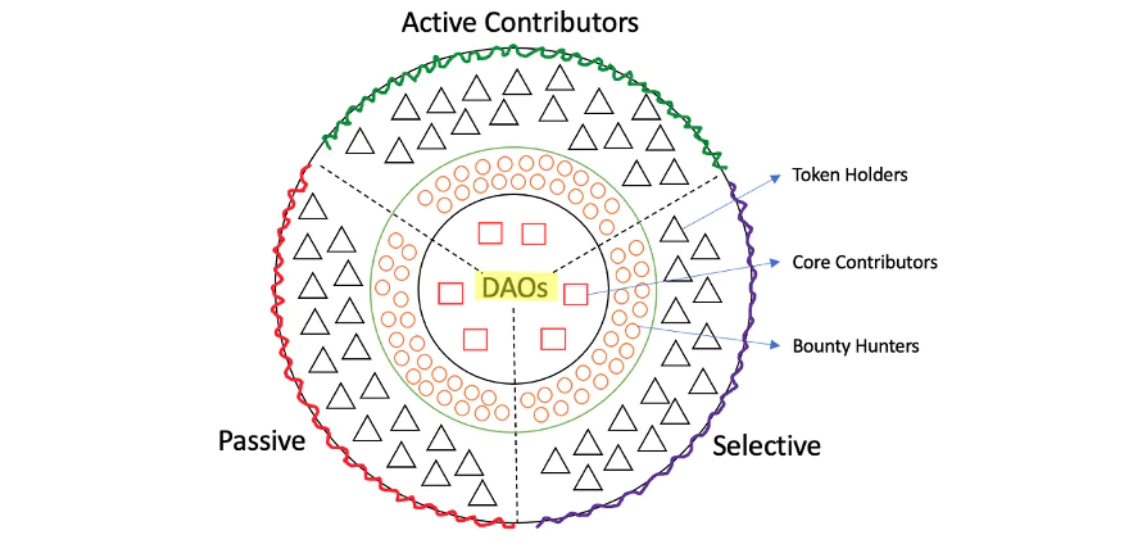
coordination
at last
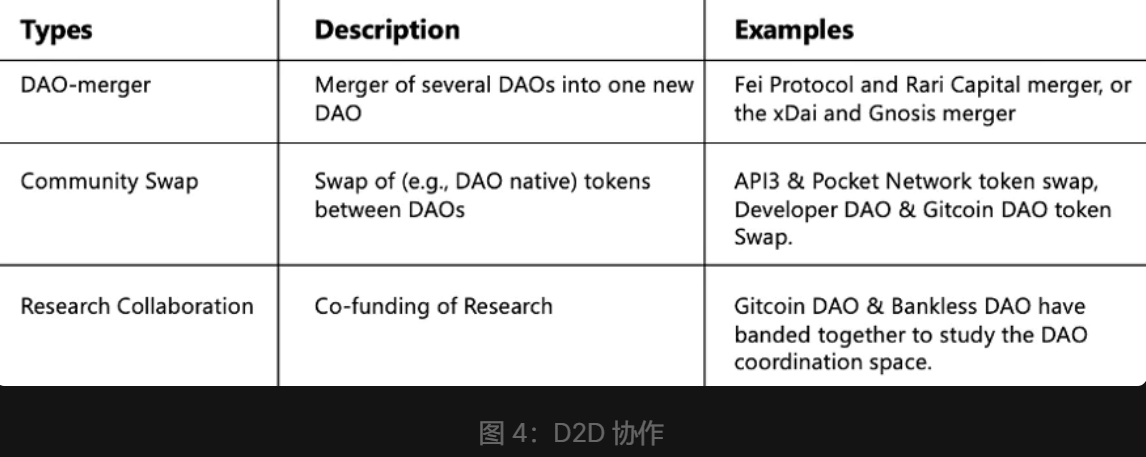
at last
DAOs are in many ways a paradigm shift from traditional corporations, as they are global from the start, require no joining or contribution, and are smooth with many processes such as community building, new onboarding, and real-time compensation. While there are many problems with the process today, there is every reason to believe they will be resolved over time. Ultimately, the DAO's success lies in the unique synergy and harmony between its smart contracts and the community. We are still a long way from making these DAOs fully efficient and truly decentralized. As with all technological advancements, DAOs will continue to get bigger, more powerful, and more diverse.



